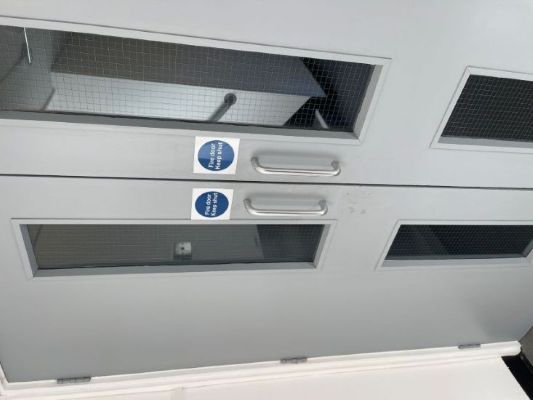Building safety highlighted during Fire Door Safety Week
22/09/2025
 Fire doors are often the first line of defence in a fire, especially when we are asleep and at our most vulnerable. Their correct specification, installation, maintenance and management can be the difference between life and death for building occupants.
Fire doors are often the first line of defence in a fire, especially when we are asleep and at our most vulnerable. Their correct specification, installation, maintenance and management can be the difference between life and death for building occupants.
Despite this, fire door breaches remain one of the most common fines implemented under the Fire Safety Order, with common problems ranging from doors being wedged open, missing or damaged doors or even non-fire doors being installed in their place.
As part of the Fire Kills campaign, Cambridgeshire Fire and Rescue Service is supporting Fire Door Safety Week, encouraging building managers, landlords, tenants and all building users to check the operation and condition of their fire doors and repair (if possible) or report those that aren’t satisfactory.
Station Commander Vinnie Crook, one of the Service’s fire protection managers, said: “It cannot be underestimated the difference that an effective fire door can make. A fire door is not always a fire exit door and is typically identified by a blue ‘Fire Door Keep Shut’ sign often at eye level.
“Fire doors are an essential part of our fire protection, they help to compartmentalise a building, such as a block of flats, keeping fire and smoke trapped for a while in one area, so that the fire can be tackled, and people can be safely evacuated.
“If you’ve seen a damaged fire door or know of a flat entrance door that hasn’t been checked for fire performance, report it to your landlord or building manager straight away and if you see a fire door propped open, make sure you shut it – a fire door cannot work when open.”
The Service is highlighting some simple tips that anyone can do to check a fire door, which lets you know whether it’s time to call in the professionals:
- Check for certification - Is there a label or plug on top (or occasionally on the side) of the door to show it is a certificated fire door?
- Check the gaps - Check the gaps around the top and sides of the door are consistently less than 4mm when closed.
- Check the seals condition - Are there any intumescent seals around the door or frame, and are they intact with no sign of damage?
- Check the hinges - Are the hinges firmly fixed (three or more of them), with no missing or broken screws?
- Check the door closes properly - Open the door about halfway, let go and allow it to close by itself. Does it close firmly onto the latch without sticking on the floor or the frame?
The Service’s website contains lots of helpful information for those responsible for looking after buildings, as well as general business fire safety. This includes a series of animated videos detailing where the Fire Safety Order applies, as well as an introduction to fire risk assessment.